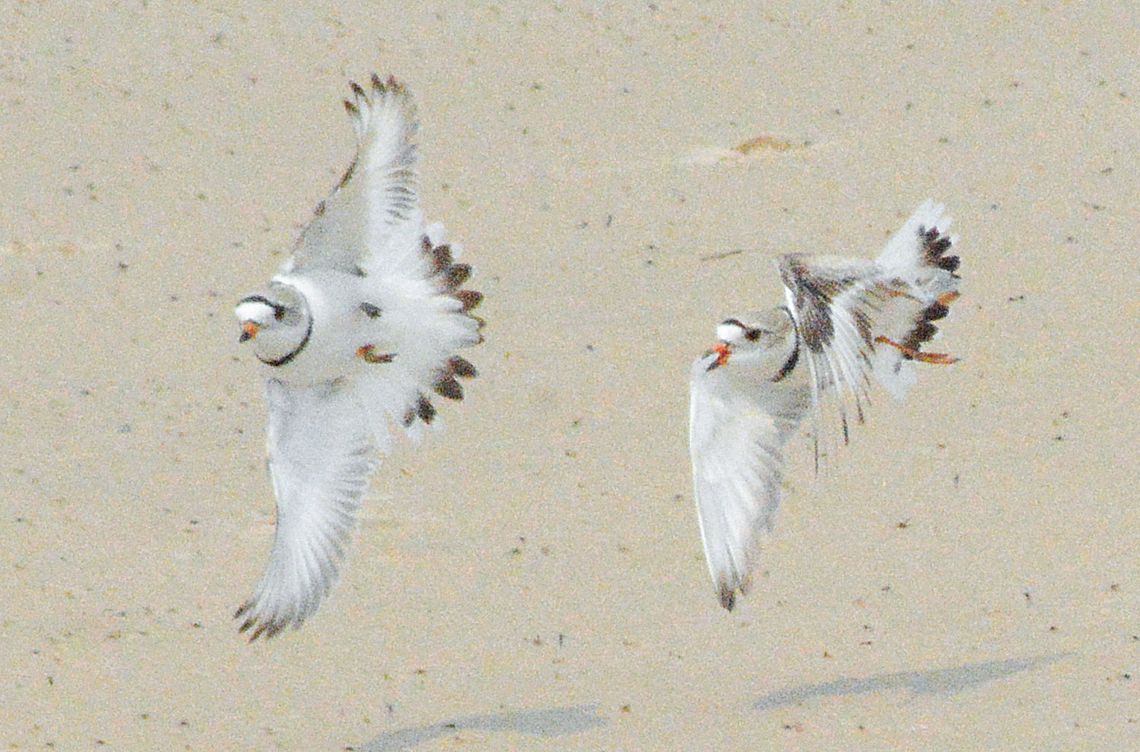Leelanau’s endangered Piping Plover flock is nearing the end of its short 2024 summer season with both challenges and successes this year. Erica Adams, lead piping plover monitor at Sleeping Bear Dunes National Lakeshore (SBDNL), says the team is focused on the fledging of the last chicks.
“We have one chick that we’re still waiting on to fledge, and then that will be our last guy for the park we’re keeping an eye on in the Platte area. We are also monitoring for the birds that are still sticking around at the park. Mostly it’s fledglings from this season, with a few males here and there and just a handful of females left in the park,” she said.
The majority of the females have already started to migrate south to their wintering grounds. Birds still located in the park are making their way to the southern grounds of Sleeping Bear. Adams said the park expects at least one more captive-reared release in partnership with the University of Michigan Pellston Biological Station and the University of Minnesota.
The SBDNL piping plover monitoring team has faced multiple challenges with fledging both on the mainland and South Manitou Island. Adams attributes the challenges to a combination of predators.
“We saw many chicks lost in the first couple of days of their life, which is unfortunate because they’re so small, they’re really not able to defend themselves from anything,” she said.
The piping plover team did have unexpected success at a new fledging nesting site where the Dune Climb trail meets Lake Michigan, which is a first for the park, fledging all four of their chicks.
“This was very exciting and somewhat unexpected,” Adams said.
Another highlight of the season included another successful year for the oldest piping plover to make her way back to SBDNL. “Gabby” is the oldest piping plover on record at 15 years old, and she successfully fledged her 34th and 35th chicks this season. This is unprecedented for Great Lake Piping Plovers, according to Adams “She’s very successful no matter who her mate is; she has a high success rate each season. She’s definitely made a significant impact on the population numbers, and many of the plovers have some sort of relation to Gabby, whether it’s children, grandchildren, or great-grandchildren at this point. They’re all over the place in the Great Lakes, and she’s part of their success as well,” Adams said.
In terms of human predators, Adams says they’ve had success and appreciate people staying out of the new seasonal closing areas between Grand Haven Maritime Museum and the Cannery, which enforced a no dog policy this year.
“We had way fewer dog incidents at Maritime this season,” Adams said. “This season we have had a number of people inside the closed fencing at Platte Point in the last two weeks or so. We are upping our efforts down there and trying to remind people that if you stay out of the closed area, you’re giving the plovers the best chance to succeed.”
The pace of the Piping Plover season is relentless, and the team has come together to support one another and the program, according to Adams.
The piping plover monitoring team at SBDNL has a combined 68 seasons of piping plover monitoring.
“(Experience) was really reflective in the way that people work together and knew how to handle situations,” Adams said. “Even though you might see some changes in what the shoreline looks like in terms of infrastructure or signs, please give piping plovers space, and they’ll be back in April, and we’ll be doing this all over again.”








